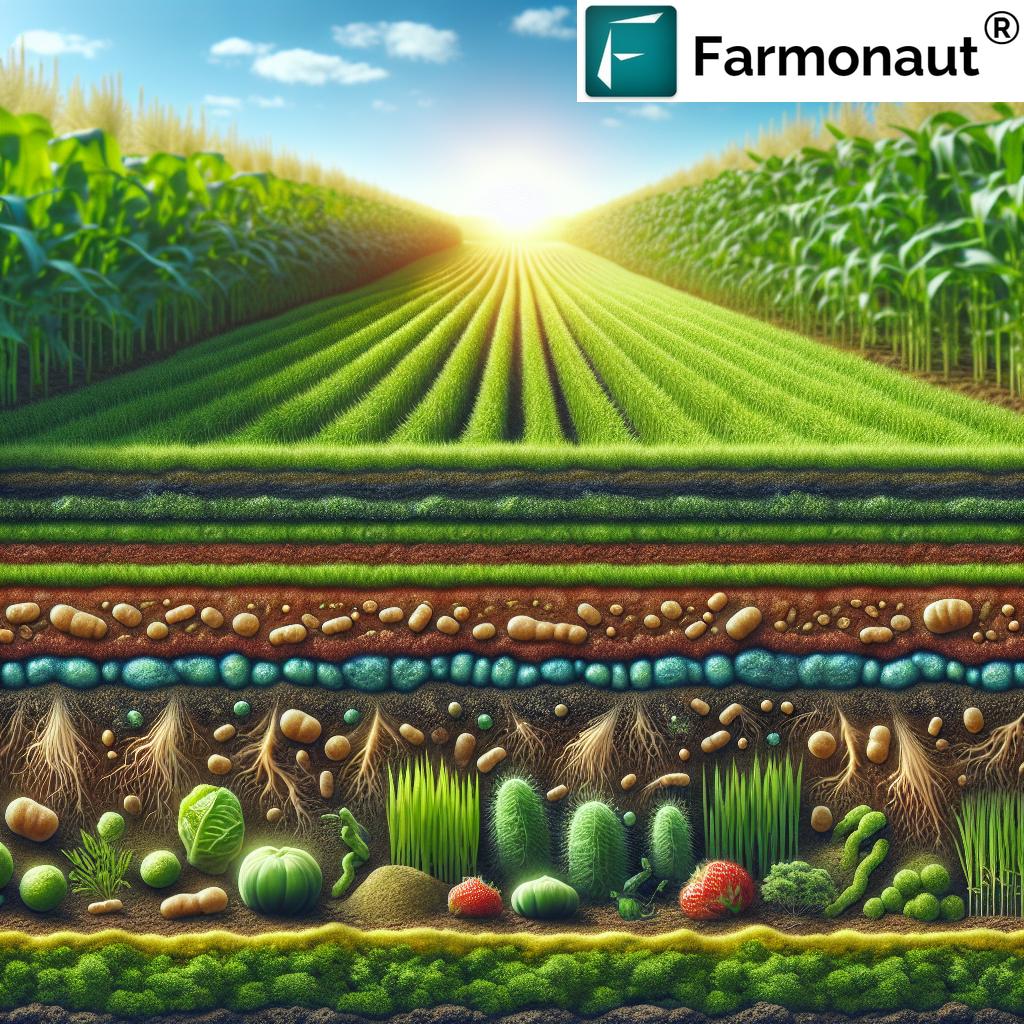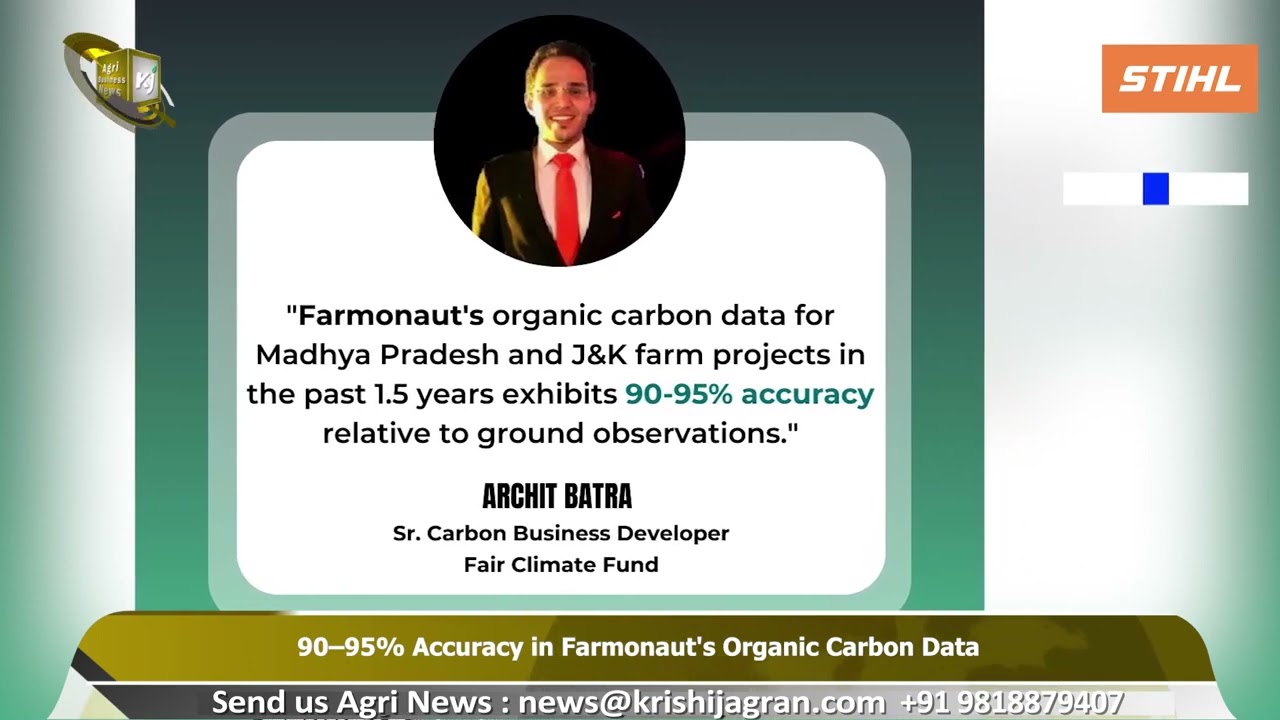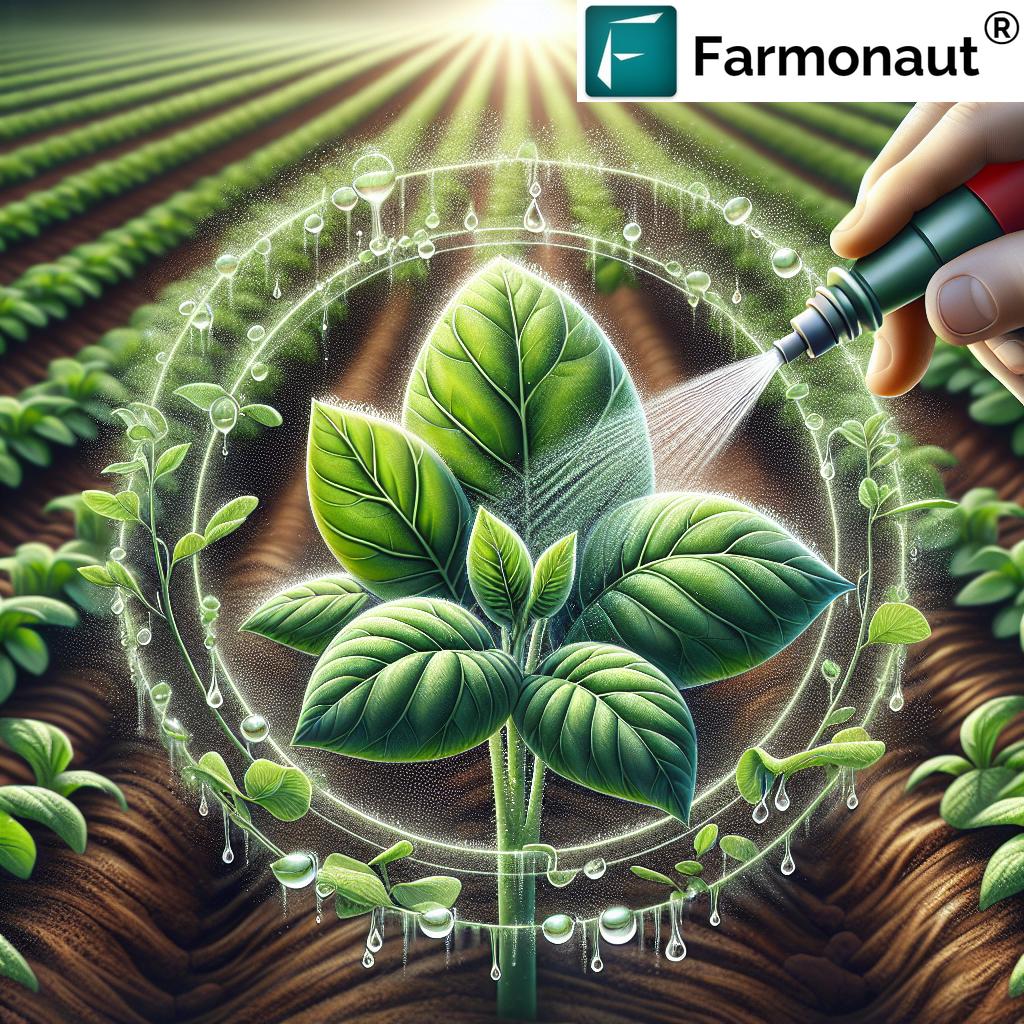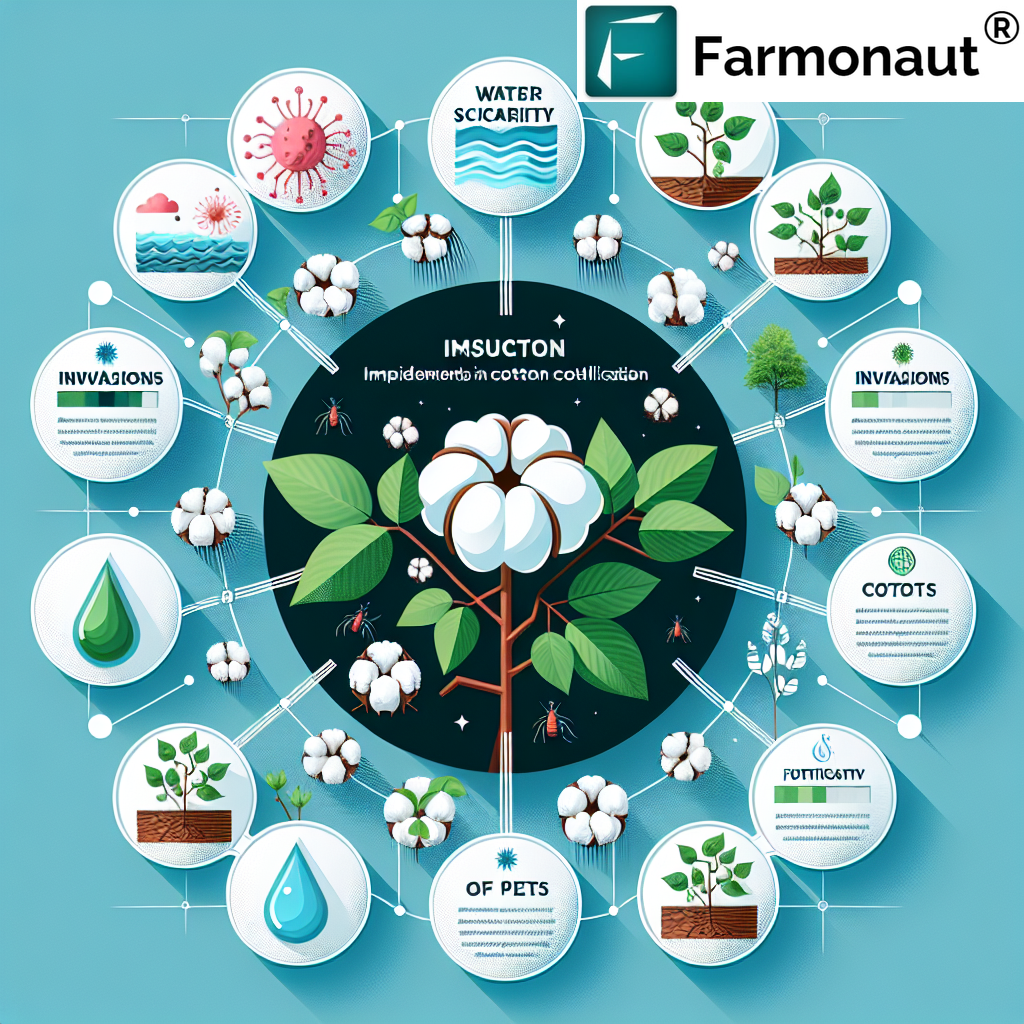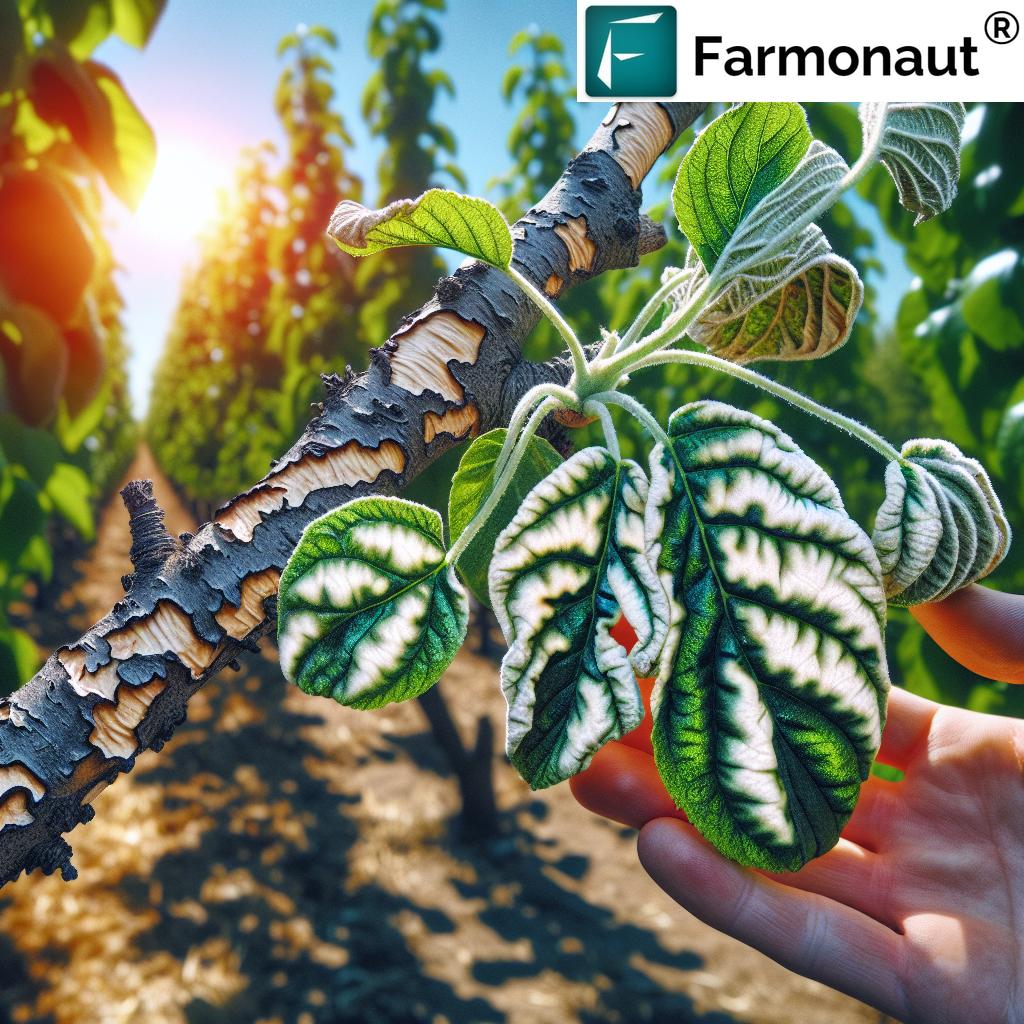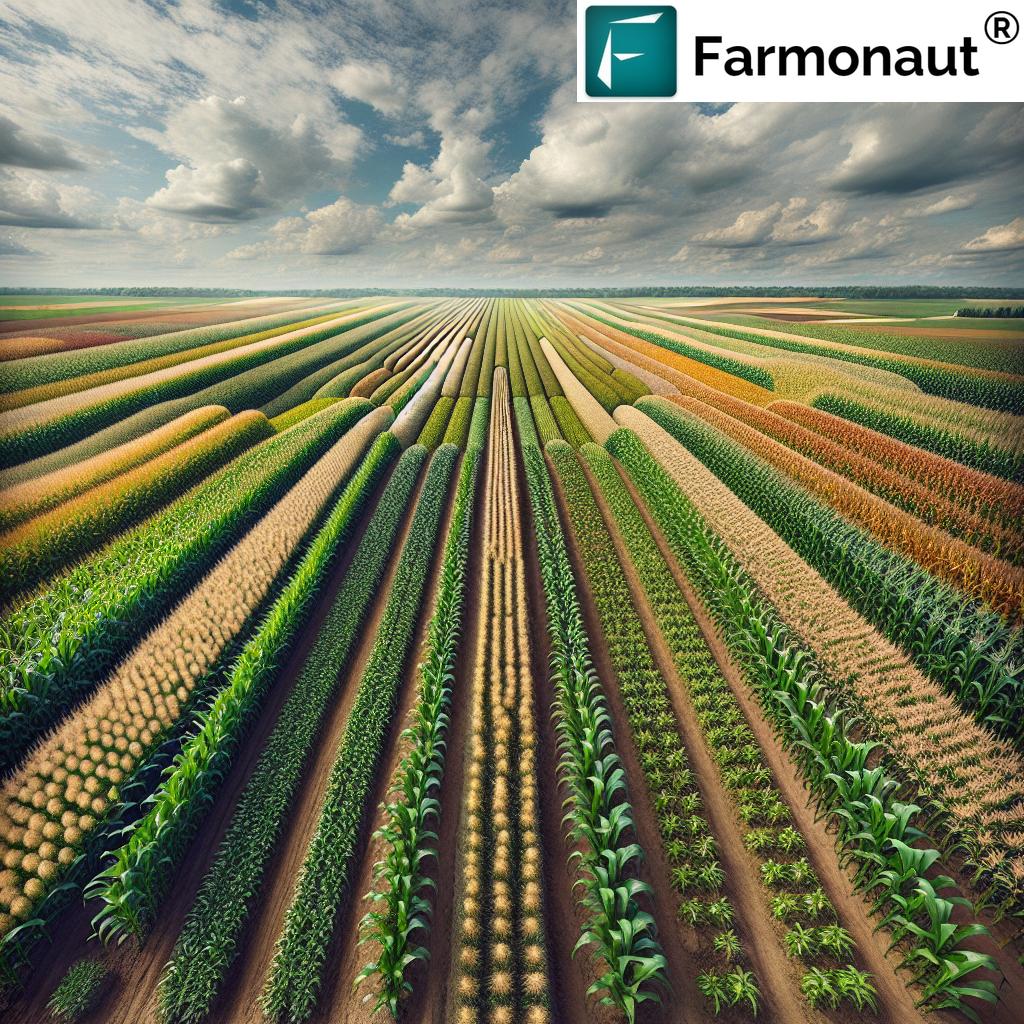Biologicals for Farming: 7 Ways to Boost Sustainability
“Biologicals can reduce chemical fertilizer use by up to 30%, promoting more sustainable and eco-friendly farming practices.”
Introduction: Why Agricultural Biologicals?
In today’s rapidly evolving agricultural landscape, achieving sustainability and productivity is no longer a choice, but a necessity. The excessive use of chemical fertilizers and pesticides in conventional farming has stressed ecosystems, degraded soil health, and raised concerns over food safety and environmental degradation.
Agricultural biologicals—products derived from natural organisms and substances—are emerging as pivotal tools in transitioning towards sustainable farming practices. Leveraging innovations in biology, biotechnology, and modern agriculture, these biologicals offer natural alternatives to chemical fertilizers and pesticides, addressing issues such as pest control, nutrient cycling, soil structure, plant growth promotion, and sustainability.
In this comprehensive guide, we will explore seven powerful ways biologicals can improve farming sustainability, review evidence-based benefits, discuss biofertilizers for agriculture, biostimulants for crops, integrated pest management solutions, and provide actionable strategies for implementation. We will also highlight how Farmonaut empowers farmers with affordable, data-driven farm management solutions to support the adoption of biologicals.
Understanding Biologicals in Agriculture
What are agricultural biologicals?
Biologicals for agriculture form a range of products and technologies derived from natural organisms or their derivatives (like plant extracts, beneficial microorganisms, or naturally occurring compounds) that enhance crop productivity by improving soil health, nutrient uptake, plant growth, and pest control. These solutions are categorized as:
- Biocontrols (Biological Pest Control Agents): Products that deploy beneficial insects, nematodes, or microbes to manage pests and diseases. Example: Bacillus thuringiensis (Bt) for controlling specific insect larvae.
- Biostimulants: Substances or microorganisms applied to plants or soil to enhance growth, nutrient use efficiency, and stress tolerance. Common examples include humic/fulvic acids, seaweed extracts, and beneficial fungi (e.g., Trichoderma).
- Biofertilizers: Products containing live organisms (often bacteria or fungi) that improve the availability and uptake of nutrients (especially nitrogen fixation and phosphorus solubilization).
These sustainable agriculture inputs are designed to either supplement or replace traditional chemical inputs, reducing environmental impact while supporting crop resilience, enhanced productivity, and long-term soil fertility.
Notably, biologicals fit perfectly into modern sustainable farming systems: they are eco-friendly, promote soil health improvement, target pests naturally, and foster resilience against climate stresses like drought and salinity.
7 Ways Biologicals Boost Farming Sustainability
Let’s take a closer look at the top seven ways agricultural biologicals drive sustainability on the farm and across the food system.
-
1. Promoting Soil Health Improvement and Fertility
The cornerstone of sustainable agriculture is healthy, fertile soil. Biologicals such as biofertilizers and biostimulants promote microbial activity, which enhances nutrient cycling, increases soil organic matter, and improves soil structure and water retention. By stimulating beneficial microorganisms (including nitrogen-fixing bacteria and mycorrhizal fungi), these products restore natural processes lost due to overuse of synthetic inputs.
Use Cases: Application of humic acid and fulvic acid biostimulants, inoculation with nitrogen-fixing bacteria for cereal crops. -
2. Reducing Chemical Dependency
Biologicals reduce reliance on synthetic pesticides and fertilizers. For example, using biocontrol agents and biofertilizers allows farmers to substitute or complement chemical treatments, minimizing pollution, runoff, and health risks associated with overuse of agrochemicals.
Example: Bacillus thuringiensis (Bt) targets harmful insect larvae, reducing the need for chemical insecticides. -
3. Enhancing Crop Resilience to Abiotic Stresses
Certain biostimulants (e.g., seaweed extracts, Trichoderma fungi) build plant resistance to drought, salinity, heat, and other abiotic stresses. This resilience leads to more consistent yields, reduces crop losses, and supports stable food production amid climate change.
Example: Seaweed-based biostimulants for tomato crops improving drought tolerance. -
4. Biological Pest Control and Sustainable Pest Management
Integrated pest management solutions using biocontrols promote sustainable, targeted control of pests and diseases. Beneficial insects, nematodes, and microbial agents (like Bt and Trichoderma) protect crops without harming non-target species, preserving ecological balance.
Example: Releasing predatory insects in greenhouses to naturally control aphids, reducing chemical sprays. -
5. Boosting Nutrient Use Efficiency (NUE)
Nutrient use efficiency (NUE) products and biofertilizers for agriculture enhance the availability and uptake of nutrients like nitrogen and phosphorus, often by fixation or solubilization.
Result: Decreased need for chemical fertilizers, improved nutrient use, and reduced environmental impact.
Example: Seed inoculation with phosphate-solubilizing bacteria in legumes. -
6. Improving Biodiversity and Soil Microbial Balance
By fostering diverse populations of beneficial microorganisms and reducing chemical disturbance, biologicals restore ecosystem balance and support rich soil microbiomes. This supports long-term soil fertility and greater crop productivity.
Example: Use of compost teas or microbial blends to enhance soil diversity in vegetable production. -
7. Supporting Regenerative Agriculture and Climate Resilience
Biologicals are key tools for regenerative agriculture: they increase soil organic carbon, improve structure, and enhance carbon sequestration. By reducing input emissions and building healthier soils, biologicals directly contribute to the fight against climate change.
Example: Integrating mycorrhizal fungi into field crops for better carbon cycling.
“Biostimulants have been shown to increase crop yields by 15% while improving soil health and biodiversity.”
Comparative Impact Table: Seven Biological Solutions for Sustainability
We summarize below the key benefits of biologicals using a side-by-side table for sustainable agriculture decision-making.
| Biological Solution | Main Benefit | Est. Reduction in Chemical Inputs (%) | Est. Increase in Soil Organic Matter (%) | Example Crop/Application |
|---|---|---|---|---|
| Biostimulants | Improves soil health and plant growth | 20–35% | 10–25% | Wheat, corn, vegetables |
| Biofertilizers | Enhances nutrient uptakes (N & P) | 25–40% | 10–20% | Legumes, rice, sugarcane |
| Biocontrols | Reduces chemical pesticide use | 35–60% | 8–15% | Vegetables, tomatoes, cotton |
| Humic & Fulvic Acids | Improves nutrient absorption, water retention | 15–20% | 8–12% | Grains, potatoes |
| Microbial Inoculants | Boosts biodiversity and disease resistance | 20–30% | 12–18% | Soybean, pulses |
| Seaweed Extracts | Improves resilience to drought/stress | 15–25% | 9–16% | Tomatoes, grapes |
| Mycorrhizal Fungi | Supports climate resilience, carbon sequestration | 10–22% | 15–26% | Corn, wheat, tree crops |
*Percentage values are indicative; actual impacts depend on crop, application, and local conditions.
Core Benefits of Biologicals in Sustainable Farming
- Holistic Crop Health: Biological products target multiple plant health aspects by improving immunity, promoting nutrient uptake, balancing microbial communities, and supporting continuous productivity.
- Environmentally Responsible: By reducing reliance on synthetic inputs and supporting sustainable farming practices, biologicals decrease the risk of water and soil pollution.
- Long-Term Soil Fertility: Enhanced organic matter, improved soil structure, and increased microbial activity drive long-term agricultural sustainability.
- Enhanced Food Security: Reliable yields and reduced crop losses, even under challenging environmental conditions, benefit farmers and consumers.
- Improved Farmer Livelihood: Lower input costs and higher-grade produce (with reduced chemical residues) help increase farmer profitability and market value.
- Biodiversity Conservation: Promoting biological pest control and supporting diverse soil life enhances farm ecosystem resilience.
Looking to track your farm’s carbon footprint or implement sustainable farm resource strategies? Explore Farmonaut’s Carbon Footprinting Tool for real-time monitoring of emissions and actionable insights for carbon reduction.
Want to ensure farm-to-table traceability for your agricultural products? Farmonaut’s Product Traceability Solution leverages blockchain for secure, transparent agricultural supply chains.
Integration Strategies: Getting the Most from Biologicals in Farming Systems
-
Integrated Pest Management (IPM) with Biocontrols:
Combine biological pest control agents (predatory insects, nematodes, microbial sprays) with monitoring and targeted chemical applications only when necessary. This minimizes chemical usage and slows resistance development in pest populations.
Relevant for: Vegetables, fruit crops, and greenhouses. -
Soil Health Management with Biostimulants & Biofertilizers:
Apply biostimulants for crops (seaweed extracts, humic/fulvic acids, Trichoderma fungi) and biofertilizers for agriculture (Rhizobium, Azospirillum, mycorrhiza) to improve nutrient cycling, organic matter, and water retention.
Relevant for: Grains, pulses, horticulture. -
Customizing Biological Solutions:
Select biological products based on crop species, local soil conditions, target pests, and environmental challenges. Precision agriculture platforms—such as Farmonaut—help assess field variability and optimize input decisions.
-
Monitoring for Impact:
Leverage technology for precision field monitoring. Our Farmonaut app provides real-time satellite imagery for vegetation, soil moisture, crop stress, and pest outbreaks.
-
Record-Keeping and Data Analytics:
Maintain records on the type, timing, and performance of biologicals. Platforms such as Farmonaut’s Large-Scale Farm Management System enable systematic input tracking, field history, and analytics for continuous improvement.
-
Farmer Training & Support:
Successful adoption of biologicals relies on guidance regarding application methods, storage conditions, and timing. Seek expert advice and use digital advisory tools, such as Farmonaut’s Jeevn AI, for customized recommendations.
How Farmonaut Empowers Sustainable Agriculture with Technology
At Farmonaut, we are dedicated to harnessing the power of cutting-edge technology for affordable, data-driven sustainable farming. Our platform, available via Android, iOS, web applications, and APIs, integrates satellite imagery, AI-based crop insights, and blockchain traceability with traditional farming practices to support the adoption of biologicals and eco-friendly solutions.
-
Satellite-Based Crop and Soil Health Monitoring:
Our platform offers multispectral satellite imagery for monitoring vegetation health, soil moisture, and crop stress, helping users optimize irrigation, fertilizer, and pest management—which aligns with integrating biologicals.
-
Jeevn AI Advisory:
The Jeevn AI system delivers real-time personalized farm advisory (weather, crop management, field-specific recommendations) to improve productivity, optimize inputs, and encourage the adoption of biologicals at optimal times.
-
Supply Chain Transparency:
Our blockchain-based traceability ensures product journey transparency, supporting eco-labeling and sustainable sourcing with Traceability Solutions.
-
Resource and Fleet Optimization:
Manage farm equipment logistics, reduce operational costs, and streamline sustainable field operations with Farmonaut Fleet Management Tools.
-
Carbon Footprint Tracking:
Reduce environmental impact and comply with green certifications through live emissions data and carbon budgeting on our dedicated Carbon Footprinting platform.
-
Accessible, Scalable, Affordable:
We serve individual farmers, agribusinesses, governments, and financial institutions with scalable solutions, helping every user transition to sustainable agriculture inputs and practices.
Interested in a farm loan or insurance that recognizes sustainable practices? Use Farmonaut’s Crop Loan and Insurance verification for satellite-based validation—get better access to finance while supporting your transition to biologicals.
Market Trends and the Future of Agricultural Biologicals
The global market for agricultural biologicals is experiencing rapid growth. Estimated at $16.67 billion in 2024 and projected to reach $31.84 billion by 2029 (CAGR of 13.8%), this trend is fueled by:
- Growing consumer demand for sustainable, residue-free food
- Government regulations and incentives supporting reduced chemical use
- Greater awareness of the risks of synthetic agrochemicals
- Biotech advances yielding better-performing biological products
- Integration with precision agriculture platforms like Farmonaut, making biological adoption data-driven and easy to monitor
As research, innovation, and technology access expand, we anticipate biologicals will become the backbone of regenerative, resilient food systems.
Challenges in the Adoption of Biologicals and How to Overcome Them
-
Performance Variability:
Efficacy of biologicals may vary under different environmental conditions (e.g., temperature, soil type, moisture), demanding precise application and sometimes advanced monitoring.
- Solution: Use field diagnostics, such as satellite-based crop health monitoring available through Farmonaut, to assess where, when, and what biologicals are likely to perform best.
-
Shelf Life and Storage Constraints:
Many biologicals (such as live microbial agents) require careful storage and have shorter shelf lives than chemicals.
- Solution: Invest in proper on-farm storage, buy in smaller lots, and coordinate delivery/application with suppliers and agri-cooperatives.
-
Initial Investment and Long-Term ROI:
Upfront costs of biologicals can be higher than conventional inputs, deterring farmers (especially smallholders) despite long-term benefits.
- Solution: Demonstrate long-term savings and yield improvements, leverage government support, and explore digital tools like Farmonaut for optimizing return on investment in inputs.
-
Knowledge Barriers:
Lack of awareness or expertise may hinder adoption.
- Solution: Use digital agro-advisory solutions like Jeevn AI within Farmonaut and undergo farmer training programs for latest techniques.
FAQ: Biologicals and Sustainable Agriculture Inputs
-
What are agricultural biologicals?
They include biocontrols, biostimulants, and biofertilizers derived from living organisms or their products. Used in crop production, they aim to improve soil, plant health, pest resistance, and sustainability.
-
Are biologicals as effective as chemical fertilizers and pesticides?
When applied correctly and in suitable conditions, biologicals can be just as effective or even superior, especially in the long term. Their impact may be slower but is more sustainable and eco-friendly.
-
Can I apply biologicals alongside chemical products?
Yes—many farmers use integrated or complementary approaches, reducing chemical rates while supplementing with biologicals for improved efficiency and reduced environmental impact.
-
What crops benefit most from biologicals?
The benefits are seen in all major crops—grains, legumes, fruits, vegetables, and even orchards. Product selection and protocol should be tailored to each crop’s needs and local soil conditions.
-
How quickly can I see results with biologicals?
While some benefits, like pest suppression, can be observed within weeks, improvements in soil health, structure, and microbial diversity are cumulative and best measured over at least one or more seasons.
-
How does Farmonaut help with the adoption of biologicals?
We equip farmers and agribusinesses with real-time data (from satellite and AI tools) for targeted input application, reducing costs and maximizing the effectiveness of biologicals in crop and soil management.
Conclusion: The Way Forward with Biologicals in Sustainable Agriculture
In summary, agricultural biologicals—including biostimulants, biofertilizers, and biocontrols—represent a necessary transition towards eco-friendly, resource-efficient, and productive food systems. They are natural alternatives to chemical fertilizers and pesticides, supporting soil health improvement, enhancing crop resilience, and reducing input dependency.
By adopting biologicals, farmers:
- Reduce environmental pollution and chemical runoff
- Boost soil fertility and organic matter content
- Increase biodiversity and pest resistance
- Enhance crop yield and quality
- Create resilient, climate-adaptive fields for the future
With new research, advancing technology, and the integration of precision ag platforms like Farmonaut, the complexity of using biologicals is simplified. Our mission is to drive this shift—empowering every farm, large or small, to pursue a sustainable, regenerative future. The right blend of digital monitoring, smart input management, and conscious adoption of biologicals will unlock a new era for global agriculture.


